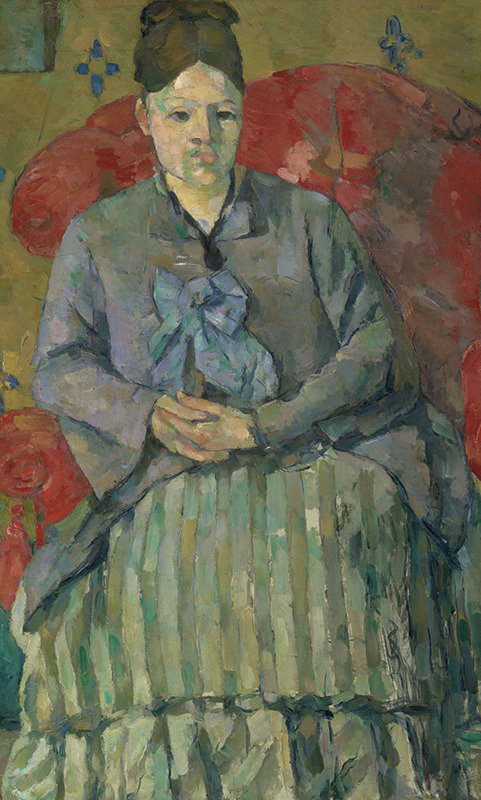Paul Cezanne
dal 18/11/2014 al 14/3/2015
Segnalato da
18/11/2014
Paul Cezanne
Metropolitan Museum of Art - MET, New York
Madame Cezanne. This exhibition of paintings, drawings, and watercolors traces the lifelong attachment of the artist to Hortense Fiquet his wife, the mother of his only son, and his most painted model. The works on view were painted over a period of more than twenty years.

This exhibition of paintings, drawings, and watercolors by Paul Cézanne (French, 1839–1906) traces his lifelong attachment to Hortense Fiquet (French, 1850–1922), his wife, the mother of his only son, and his most painted model. Featuring twenty-four of the artist's twenty-nine known portraits of Hortense, including Madame Cézanne in the Conservatory (1891) and Madame Cézanne in a Red Dress (1888–90), both from the Metropolitan Museum's collection, the exhibition explores the profound impact she had on Cézanne's portrait practice.
The works on view were painted over a period of more than twenty years, but despite this long liaison, Hortense Fiquet's prevailing presence is often disregarded and frequently diminished in the narrative of Cézanne's life and work. Her expression in the painted portraits has been variously described as remote, inscrutable, dismissive, and even surly. And yet the portraits are at once alluring and confounding, recording a complex working dialogue that this unprecedented exhibition and accompanying publication explore on many levels.
The depictions of Hortense in oil, watercolor, and graphite provide the only material clues to her partnership with Cézanne, which began in Paris in 1869, while she was working as a bookbinder. Although the circumstances of their first encounter are unknown, an early portrait from 1872 (now lost) suggests that she was modeling for Cézanne by the age of twenty-two. Cézanne took great pains to conceal his mistress and their only child, Paul, from his family, fearing his authoritative father's disapproval. This complicated subterfuge led to separate residences, frequent and often desperate appeals for funds, and long periods of living apart, even after their marriage in 1886. Despite this seeming neglect, the portraits attest to the constancy of a relationship that was critical to the artist's practice and development. Their story is a compelling one indeed, perhaps all the more so for the absence of its particulars.
Highlights of the painted portraits in the exhibition include Madame Cézanne in a Red Armchair (ca. 1877) from the Museum of Fine Arts, Boston; Madame Cézanne (ca. 1885) from the Nationalgalerie, Museum Berggruen in Berlin; Portrait of Madame Cézanne (ca. 1885–87) from the Philadelphia Museum of Art; Madame Cézanne in a Striped Dress (1883–85) from Japan's Yokohama Museum of Art; Madame Cézanne in Blue (ca. 1888–90) from the Museum of Fine Arts, Houston; and the aforementioned canvases from the Metropolitan Museum's collection. Highlights of the works on paper include three striking watercolors, fourteen drawings, and three rare sketchbooks containing affectionate studies of Hortense and young Paul.
The exhibition and catalogue are made possible by The Florence Gould Foundation.
Image: Paul Cézanne (French, 1839–1906). Madame Cézanne in a Red Armchair (Madame Cézanne in a Striped Dress) (detail), ca. 1877. Oil on canvas
Press Contact:
Elyse Topalian, Mary Flanagan
communications@metmuseum.org; (212) 570-3951
Opening: November 19th 2014
MET museum
1000 5th Ave, New York
Hours: Friday-Saturday 10:00 a.m.-9:00 p.m. Sunday-Thursday 10:00 a.m.-5:30 p.m.
Admission: Adults $25.00, seniors (65 and over) $17.00, students $12.00



